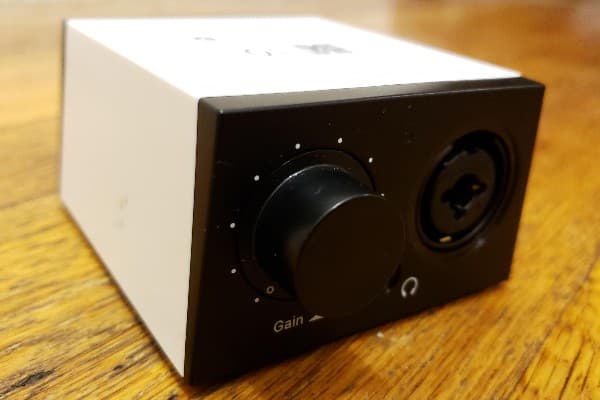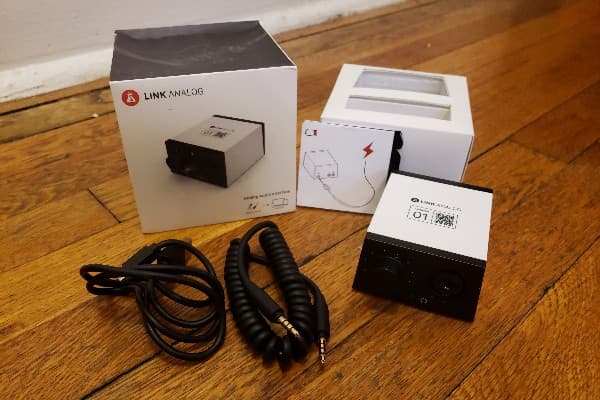Light audio recording was borne of the need to downsize, financially and physically. BandLab’s in-browser DAW and companion app have been instrumental in this. But, they also make hardware that supports this objective: so, here’s their Link Analog audio interface.
Background
In the early days of this website, you’ll read of the Samson Studio GT. Now, these were an awesome set of monitors, with a built-in audio interface. Certainly, they were very convenient.
But, there were smaller monitors available. And, having my audio interface separate from the monitors would mean that I didn’t have to bring an entire monitor with me when recording remotely.
Additionally, my Studio GTs were old, with a UK plug, and needed a shim to make the left speaker work.
So, I replaced the monitors with the BT3s: they’re smaller, and have been working out great. But, this meant I needed a separate audio interface.
Because light audio recording means keeping things compact and mobile, as well as cheap, I specifically started looking at solutions that would work with my phone, as well as my Chromebook.
As I was already a relatively heavy user of BandLab, I gave their Link Analog a go.
However, the reviews of it are pretty terrible. But, I decided to give it a go for myself: if it didn’t work out, I could sell it on.
I managed to snag one on Reverb for $30 including shipping.

BandLab Link Analog: specs
| Input | Neutrik combined jack plug and XLR |
| Output | 1/8″ headphone output; 1/8″ TRRS speaker output |
| Power | Built-in rechargeable battery – charged with micro USB |
| Controls | Just a lone gain knob |
| Dimensions | 2.75″ (70mm) x 1.6″ (42mm) x 3″ (77mm) |
In use
When it arrived, I looked through its contents and felt it up. It was definitely a durable unit compared to the iRig Pre I’d been using.
Firstly I tried it with the BandLab app on my phone, with my bass. It worked. Yay!
Then, I tried it with BandLab in Chrome on my Chromebook. And it didn’t work. I assumed my Chromebook would use it instead of the internal microphone, but it did no such thing. Aw! I even tried with both the mini jack plug connector, and the USB.
Next, I tried it with the BandLab app using my microphone. And, it didn’t work. Aw!
So, I started re-reading the specs. And I guess I learned that assumptions I’d made weren’t there, and this wasn’t what I needed.
I assumed that it would work with my mic, because, well, it’s a modern audio interface with an XLR input. But no. It doesn’t have the phantom power my mic needs.
BandLab Link Analog: conclusion
In conclusion…
| Construction: probably the most durable of audio interfaces in this space | Chromebook: it doesn’t work with mine |
| Price: they cost $40 directly from BandLab – that’s cheap as chips | Phantom power: it’s disappointing it doesn’t have it as standard |
| Rechargeable via USB: significantly better than throwing out used batteries | No USB connectivity: the USB connection is for charging, and charging only; obviously this would likely also help it work with Chromebooks |
While the Analog Link isn’t the “one audio interface to rule them all” that I need for light audio recording, I can see its potential. For example, if I still had my SM58 and wanted something that it was OK to bash around a little… that would be fine.
However, I have one mic to rule them all. And I need to be able to bring it to record drums as much as I need to record guitars in the apartment. So, I need an audio interface to match that versatility.
But, the Link Analog isn’t quite it. However, I still don’t know why it’s so badly reviewed elsewhere.
If you found this helpful, subscribe on the right hand side of this page. You’ll be notified of new posts on Thursdays, inspiring you going into the weekend.
Share your own light audio recording thoughts and experiences! There’s a Facebook group, a Subreddit, Twitter and Instagram.
Also, feel free to shoot me a coffee!


